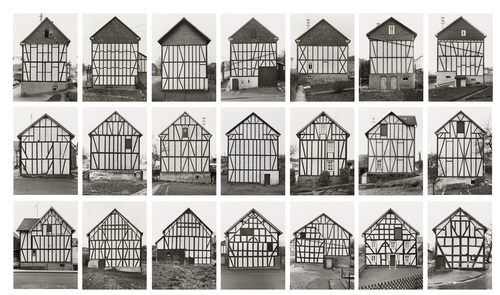NICHOLAS NIXON –
Nicholas Nixon (Detroit, 1947) graduated with a degree in American Literature in 1969 and went on to enroll in a postgraduate program in Fine Arts at the University of New Mexico. After completing his studies he relocated to Brookline, outside of Boston, and began his career as an independent photographer and professor of photography at Massachusetts College of Art and Design.
Influenced by photographers such as Walker Evans, his interest in portraiture and social photography is visible in renowned series such as The Brown Sisters (1975 – present) and People with AIDS (1991). Nixon has been able to portray issues related to the passing of time, intimacy, love, and illness with detail and emotion.
The photographer has received numerous awards, such as the John Simon Guggenheim Memorial Foundation Fellowship in 1977 and 1986, and the National Endowment for the Arts Photography Fellowship in 1976, 1980 and 1987. His works belong to some of the most prestigious collections worldwide including the National Gallery of Art in Washington, the Art Institute of Chicago, and La Maison Européenne de la Photographie in Paris. His photographs have been exhibited extensively including at MoMA in New York.
These images of the vast cityscapes of New York and Boston, at once both ordered and chaotic, were part of one of the most influential exhibitions of the seventies, New Topographies: Photographs of a Man-Altered Landscape at the George Eastman House.
image analysis –
visual –
within this image you can see that this is a black and white cityscape, which has a winter setting. this can be seen from the snow covered streets and cars. also the building seem like they are early to mid 20th century architecture, which suggests that its an industrialized city. which in this image you can see few or no people which emphasizing the built environment over human presence.
technical –
the image is shot from a an elevated perspective, which is an wide angle. this provides a broad view of the city. this photo has a deep depth of field, this keeps all elements sharp and in focus. there is a high contrast between the snow, dark buildings and the smoke, which enhances the texture and details.
contextual –
within this photo its likely a mid 20th century city, which is in north America, during the period of industrial and economic growth. there is also reflects of the post war urban renewal with infrastructure prioritizing efficiency and function.
conceptual –
this photo there is industrialization and modernization, you can see this from the smokestacks, large buildings and structural roadways which reflect urban growth. there are environmental impacts, this is seen in the thick smoke which suggests pollution, which is caused by industrial expansion. also the cold, structured atmosphere, which is shown in the black and white aesthetics and the winter setting evoke a sense of isolation or detachment.
artist reference –
Stephen Shore, Beverly Boulevard and La Brea Avenue, Los Angeles, California, June 21, 1975, chromogenic colour print –
- Foreground vs background | Dominant features
- Composition | low horizon line | Square format
- Perspective and detail / cluttering
- Wide depth of field | Large Format Camera
- Colour | impact and relevance
- Nationalism vs mobility vs isolation
- Social commentary | The American Dream ?
- An appreciation of the formal elements : line, shape, form, texture, pattern, tone etc
technical –
within this image you can see that it uses natural daylight, which you can tell that it could of been taken in the middle of the day or late morning, also you can see by the shadow’s that the sun is on the left. furthermore the shadows you can see have a hard edge. and you can see in the image that its a cold light.
visual –
firstly you can see that a hard edge is seen in the image by the structure, the mountain’s in the background and the American building such as the petrol station. furthermore within the image there is some aliment with the rule of thirds, such as the bottom 3rd is all clotted with multiply aspects within it. the image has an vanishing point within the image which draws people to the centre of the image.
contextual –
you can see that in this image that industrialisation is seen and from the cars and transport show that people are connected but at the time people weren’t worried about the environment, which before cars people were isolated. but this image shows that people are now connected. also showing this is the aromatises and petrol stations. in addition within this image you can see the the main colours are red, white and blue which could represent nationalism, theses colours are the same as the American flag.

























































































































































































































![Exposure Bracketing Photography [COMPLETE GUIDE]](https://phlearn.com/wp-content/uploads/2018/11/2-stop.jpg)




















